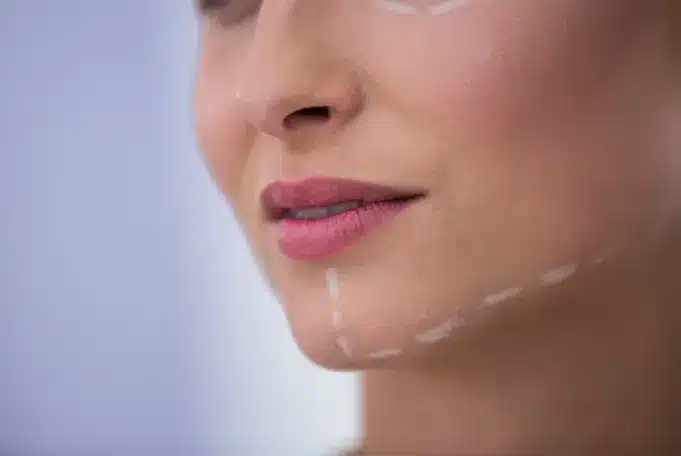side effects of Buccal fat removal surgery, while offering aesthetic enhancements by sculpting the face, can lead to several side effects including swelling and bruising, common responses as the body heals. In some cases, patients may experience infection or asymmetry, highlighting the importance of selecting a skilled surgeon and following post-operative care instructions meticulously.
Introduction to Buccal Fat Removal
Buccal fat removal is a surgical procedure that aims to enhance facial aesthetics by reducing the prominence of the buccal fat pads, which are located in the lower cheeks. These fat pads are responsible for the roundness and fullness of the face. By removing some of the buccal fat, surgeons can create a more contoured facial profile and accentuate the cheekbones.
The procedure is typically performed on an outpatient basis, and it involves making small incisions inside the mouth to access the buccal fat pads. The surgeon then gently removes an appropriate amount of fat, sculpting the cheeks to achieve the desired result. The incisions are closed, leaving no visible scarring on the outer face.
Buccal fat removal is a cosmetic procedure designed to enhance facial contours by reducing the fullness of the cheeks. Also known as cheek reduction surgery, it aims to create a more sculpted appearance and improve facial proportions.
Different Types of Buccal Fat Removal
Buccal fat removal is a cosmetic surgical procedure aimed at reducing the fullness of the cheeks by removing a portion of the buccal fat pad. This procedure is often sought after by individuals who desire a more sculpted facial appearance. There are a few different approaches to buccal fat removal, each with its own techniques and considerations:
Clinic contact number: +989371200167
Traditional Buccal Fat Removal
This is the most common approach where the surgeon makes an incision inside the mouth, usually near the second upper molar.
The buccal fat pad is then carefully located and a portion of it is excised.
The incision is closed with dissolvable sutures.
Recovery typically takes about a week, during which patients may experience swelling and discomfort.
Procedure Steps
- Consultation: The process typically begins with a consultation with a board-certified plastic surgeon. During this consultation, the surgeon evaluates the patient’s facial anatomy, discusses their goals and expectations, and assesses their candidacy for the procedure.
- Preparation: Before the surgery, the patient is given specific instructions to follow, which may include avoiding certain medications that can increase the risk of bleeding and arranging for transportation to and from the surgical facility.
- Anesthesia: Traditional buccal fat removal is usually performed under local anesthesia with or without sedation. General anesthesia may be used for patients who prefer to be asleep during the procedure.
- Incision: Once the anesthesia has taken effect, the surgeon makes a small incision on the inside of the cheek, usually near the second upper molar. This incision is strategically placed to minimize visible scarring.
- Extraction of Buccal Fat: Through the incision, the surgeon locates the buccal fat pad, which lies beneath the cheekbones. Using delicate instruments, a portion of the buccal fat pad is carefully removed. The amount of fat removed depends on the patient’s desired outcome and facial anatomy.
- Closure: After the desired amount of fat has been excised, the incision is closed with dissolvable sutures. The sutures help to secure the tissues and promote proper healing.
- Recovery: Following the procedure, patients are typically monitored for a short period in the recovery area before being discharged home. They may experience some swelling, bruising, and discomfort, which can be managed with pain medication and cold compresses.
- Post-operative Care: Patients are provided with post-operative instructions, which may include dietary restrictions, oral hygiene guidelines, and recommendations for managing swelling and discomfort. Follow-up appointments are scheduled to monitor healing progress and address any concerns.
Benefits and Considerations
- Improved Facial Contour: Buccal fat removal can enhance facial definition by reducing excess fullness in the cheeks.
- Minimal Scarring: The incisions for buccal fat removal are made inside the mouth, resulting in minimal visible scarring.
- Permanent Results: The results of buccal fat removal are generally permanent, although changes in weight or aging can affect facial appearance over time.
- Patient Satisfaction: Many patients report high levels of satisfaction with the results of buccal fat removal, achieving a more sculpted and balanced facial appearance.
- Risks and Complications: As with any surgical procedure, buccal fat removal carries risks, including infection, bleeding, asymmetry, and nerve injury. It’s essential for patients to understand these potential risks and discuss them with their surgeon before undergoing the procedure.
Mini-Invasive Techniques
Some surgeons perform buccal fat removal using mini-invasive techniques, such as using smaller incisions or utilizing special instruments to minimize tissue trauma.
These techniques may result in reduced recovery time and less noticeable scarring.

Combination Procedures
Buccal fat removal is sometimes combined with other facial surgeries, such as liposuction, chin augmentation, or facelifts, to achieve overall facial harmony.
Combining procedures can also reduce overall downtime and costs for the patient.
Partial Buccal Fat Removal
In some cases, only a portion of the buccal fat pad is removed to achieve a more subtle change in facial contour.
This approach is suitable for patients who desire a more natural-looking result or who have concerns about excessive hollowing of the cheeks.
Customized Techniques
Surgeons may tailor the technique to each individual patient based on factors such as their facial anatomy, desired outcome, and skin elasticity.
This customization helps ensure that the results are both aesthetically pleasing and harmonious with the patient’s overall facial features.
It’s important for individuals considering buccal fat removal to consult with a qualified and experienced plastic surgeon who can assess their candidacy for the procedure and discuss the most appropriate technique based on their goals and anatomy. Additionally, patients should have realistic expectations about the outcomes of the procedure and understand the potential risks and complications involved.
Facial contouring surgery, also known as facial sculpting or facial reshaping, is a cosmetic procedure aimed at enhancing the facial structure and achieving a more balanced, harmonious appearance. This surgical technique involves altering certain facial features’ shape, size, or position to create a more aesthetically pleasing look.
Understanding the Boom in Facial Cosmetic Surgery
Buccal fat removal surgery, a specialized procedure in cosmetic surgery aimed at enhancing facial contours by removing the buccal fat pad, has seen significant contributions from experts affiliated with leading institutions. Prominent figures such as Dr. Sydney Coleman from New York University, renowned for pioneering techniques in fat grafting, have indirectly influenced advancements in facial cosmetic procedures, including buccal fat removal.
Although not directly associated with this specific surgery, the foundational work in fat manipulation has paved the way for refined surgical approaches. Furthermore, universities like Harvard and Johns Hopkins have been instrumental in conducting research that supports the efficacy and safety of cosmetic surgeries, thus contributing to the field’s growth.
The most active entities in the realm of buccal fat removal are often private cosmetic surgery clinics, with Beverly Hills Plastic Surgery Group standing out due to its high-profile clientele and a strong focus on facial aesthetics. In recent years, statistics have highlighted a surge in the popularity of buccal fat removal, with the American Society of Plastic Surgeons reporting a notable increase in the number of these procedures.
The demand for a more chiseled and youthful facial appearance drives this trend, as evidenced by the growing number of surgeries performed annually. Terms like “bichectomy” (another name for buccal fat removal) have become more common in professional discourse, reflecting the procedure’s integration into the broader cosmetic surgery lexicon.
Clinic contact number: +989371200167
Side Effects of Buccal Fat Removal
As with any surgical procedure, removing buccal fat carries risks and potential side effects. It is essential to have a comprehensive understanding of these side effects before deciding to undergo the procedure. Here are 20 possible side effects of buccal fat removal:
- Swelling: Swelling is the first side effects of buccal fat removal, and it may last for several weeks. Applying cold compresses and following post-operative care instructions can help manage swelling.
- Bruising: Bruising around the cheeks and jawline is another common side effect. It typically resolves within a few weeks but may take longer in some cases.
- Numbness: Temporary numbness or loss of sensation in the cheeks or surrounding areas may occur due to nerve irritation during the procedure. Sensation usually returns gradually over time.
- Pain: Mild to moderate pain or discomfort is expected after buccal fat removal surgery. Pain medication the surgeon prescribes can help manage any discomfort during the recovery period.
- Infection: Although rare, there is a risk of infection following any surgical procedure. Proper wound care and adherence to post-operative instructions can minimize this risk.
- Bleeding: Some degree of bleeding is average after surgery, but excessive or prolonged bleeding should be reported to the surgeon immediately.
- Scarring: While the incisions for buccal fat removal are made inside the mouth, scarring is minimal and not visible externally. However, individual healing responses can vary.
- Asymmetry: There is a slight risk of uneven or asymmetrical results, with one cheek appearing different. Skilled surgeons take precautions to minimize the side effects of buccal fat removal, but it can still occur.
- Unsatisfactory Results: Although rare, some patients may not achieve the desired results following buccal fat removal. Realistic expectations and open communication with the surgeon can help mitigate this risk.
- Changes in Facial Contour: Removing buccal fat can alter the facial contour, and in rare cases, it may lead to a gaunt or sunken appearance. Proper assessment and careful fat removal can help avoid this side effect.
- Hematoma: A hematoma refers to the collection of blood under the skin, which can occur after surgery. It may require drainage to aid in the healing process.
- Allergic Reactions: In rare instances, patients may experience an allergic reaction to medications or materials used during surgery. Informing the surgeon about any known allergies beforehand is crucial.
- Delayed Healing: Smoking, poor nutrition, or pre-existing medical conditions can lead to delayed wound healing. Following the surgeon’s instructions for post-operative care can help minimize the side effects of buccal fat removal.
- Adverse Anesthesia Reactions: Anesthesia carries inherent risks, such as allergic reactions, breathing difficulties, or adverse drug interactions. This side effects of buccal fat removal are generally low but should be considered.
- Prolonged Recovery: Recovery time can vary among individuals, with some patients requiring more time than others to heal completely. Patience and adherence to post-operative guidelines are essential for a successful recovery.
- Altered Chewing: Swelling and tenderness in the cheeks may temporarily affect chewing and eating habits. Eating a soft diet during the initial recovery can help alleviate this discomfort.
- Sensitivity to Hot and Cold: Some patients may experience increased sensitivity to hot and cold foods and beverages due to temporary nerve irritation. This sensitivity usually resolves over time.
- Loss of Taste: In rare cases, temporary loss or alteration of taste perception may occur due to nerve irritation during the procedure. Normal taste sensation usually returns within a few weeks.
- Dry Mouth: Temporary dryness or discomfort in the mouth may occur after buccal fat removal. Maintaining proper oral hygiene and staying hydrated can help alleviate these symptoms.
Psychological Effects: As with any cosmetic procedure, there can be psychological effects associated with buccal fat removal. Having realistic expectations and consulting with a qualified professional to ensure the procedure aligns with personal goals is essential.

Removing this fat can highlight the bone structure in your face, especially your cheekbones and the hollowed-out areas between your cheeks and jawline.Cleveland Clinic
Summary
The side effects of Buccal Fat Removal surgery, while often temporary, can have significant impacts on a patient’s recovery and satisfaction with the procedure. Changes in facial expression and numbness are notable concerns, as they directly affect daily interactions and personal comfort. These symptoms usually diminish over time, but they underscore the delicate nature of the surgery and the importance of careful technique.
Bruising and infection, although common in the immediate post-operative period, usually resolve with proper care and adherence to post-surgery instructions provided by the healthcare team. However, not all side effects are so easily managed. Asymmetry, one of the more distressing potential outcomes, can lead to dissatisfaction with the aesthetic results, impacting a patient’s self-esteem and confidence.
In some cases, this might necessitate revision surgery, a decision not taken lightly due to the additional risks and costs involved. It’s crucial for individuals considering this procedure to weigh these potential side effects against the desired cosmetic benefits, engage in thorough discussions with their surgeon about risks, and consider the expertise of the professional performing the surgery to minimize the likelihood of adverse outcomes.
Clinic contact number: +989371200167
FAQs
1. Is buccal fat removal permanent?
Yes, buccal fat removal provides permanent results.
2. How long is the recovery period for buccal fat removal?
Recovery time varies but generally takes one to two weeks.
3. Are the side effects of Buccal Fat Removal worth it?
Personal goals and preferences should guide the decision.
4. Is buccal fat removal permanent?
Yes, the results of buccal fat removal are generally permanent. However, changes in weight or aging can affect facial appearance over time.
5. What is the recovery process like?
Recovery from buccal fat removal typically takes about a week. Patients may experience swelling, bruising, and discomfort, which can be managed with pain medication and cold compresses. They are usually advised to stick to a soft diet and avoid strenuous activities during the initial recovery period.
https://my.clevelandclinic.org/health/treatments/23396-buccal-fat-removal



